Dayton Aviation Heritage National Historical Park Quick Visit Guide
I’ll be honest – I almost didn’t make it to Dayton Aviation Heritage National Historical Park. After spending time at the Charles Young Buffalo Soldiers National Monument, I was running short on time and figured I’d have to skip this one. But with less than an hour to spare, I decided to make a quick stop, and boy, am I glad I did!
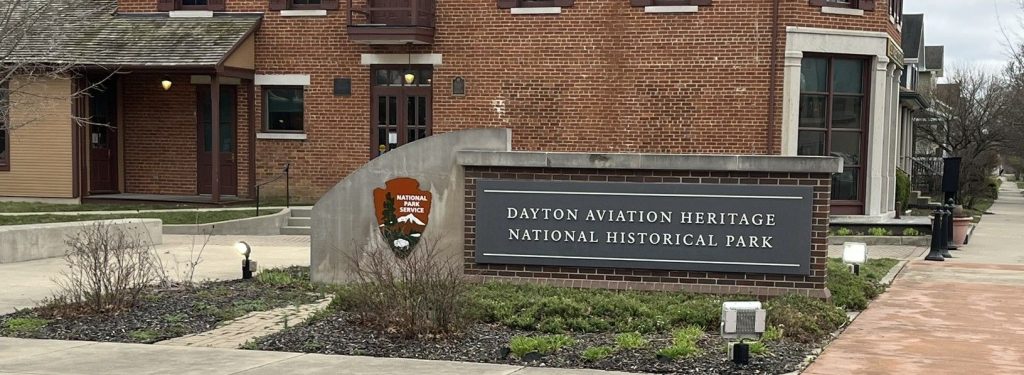
What I discovered in that short visit completely transformed my understanding of the Wright Brothers’ story. Having previously visited the Wright Brothers National Memorial in North Carolina where they made their famous first flight, I thought I this was all you needed to know. But Dayton? This is where the complete story of their life, entrepreneurial spark and ingenious innovation unfolds.
Park Background: More Than Just a Bicycle Shop
Dayton Aviation Heritage National Historical Park honors three remarkable men who changed American history: Wilbur Wright, Orville Wright, and poet Paul Laurence Dunbar. The park consists of six sites spread across the greater Dayton area, but if you’re short on time like I was, the Wright-Dunbar Interpretive Center and Wright Cycle Company building at 16 South Williams Street is where you’ll want to start.
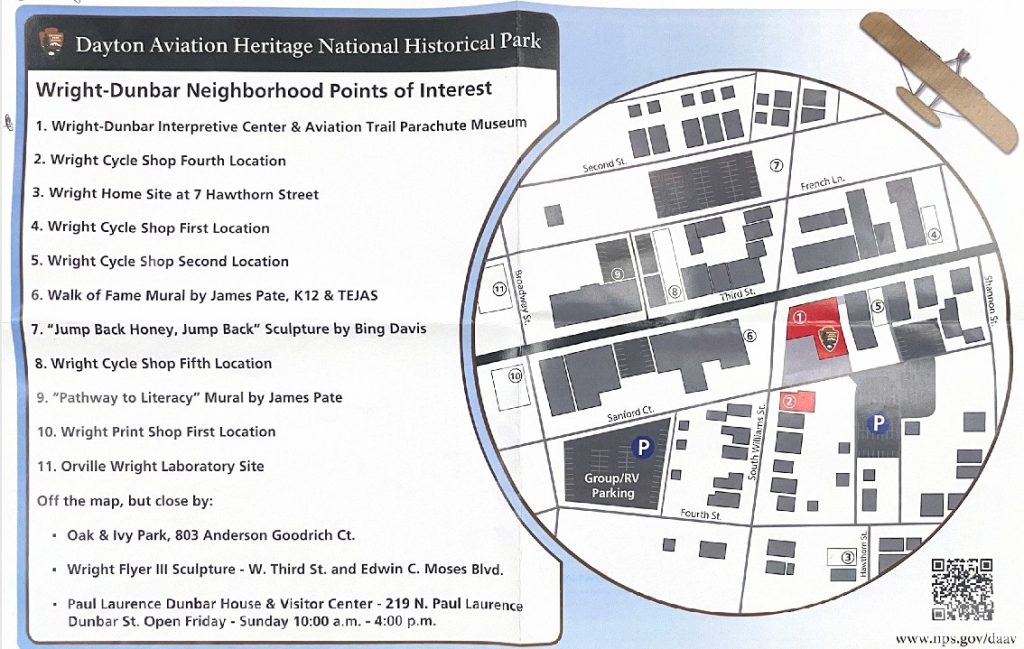
The park was established in 1992, and what really impressed me was how it preserves not just the Wright Brothers’ aviation legacy, but their complete entrepreneurial journey. These weren’t just bicycle mechanics who got lucky with flying – they were innovative businessmen, printers, and inventors who systematically solved the problem of human flight. You can learn more about the park’s complete offerings on the official National Park Service website.
Practical Information for Your Visit
Parking: I parked on the street right in front of the center, which worked perfectly for a quick visit. There are also two large parking lots available as well.
Hours: The Wright-Dunbar Interpretive Center is open Wednesday through Sunday, 10 AM to 4 PM (March-October). The Wright Cycle Shop tours depend on ranger availability, so ask at the front desk when you arrive.
Entry Fee: Access to the sites at the Historical Park are free and you do not need an America the Beautiful annual pass or pay a daily entrance fee to enjoy the exhibits
Area Context: The park is located in a historic neighborhood that’s seen better days, but don’t let that deter you. The sites themselves are beautifully maintained and the history is absolutely worth experiencing.
What to Prioritize When Time is Limited
When you’ve got less than an hour (like I did), here’s what absolutely cannot be missed:
Start with the Wright-Dunbar Interpretive Center
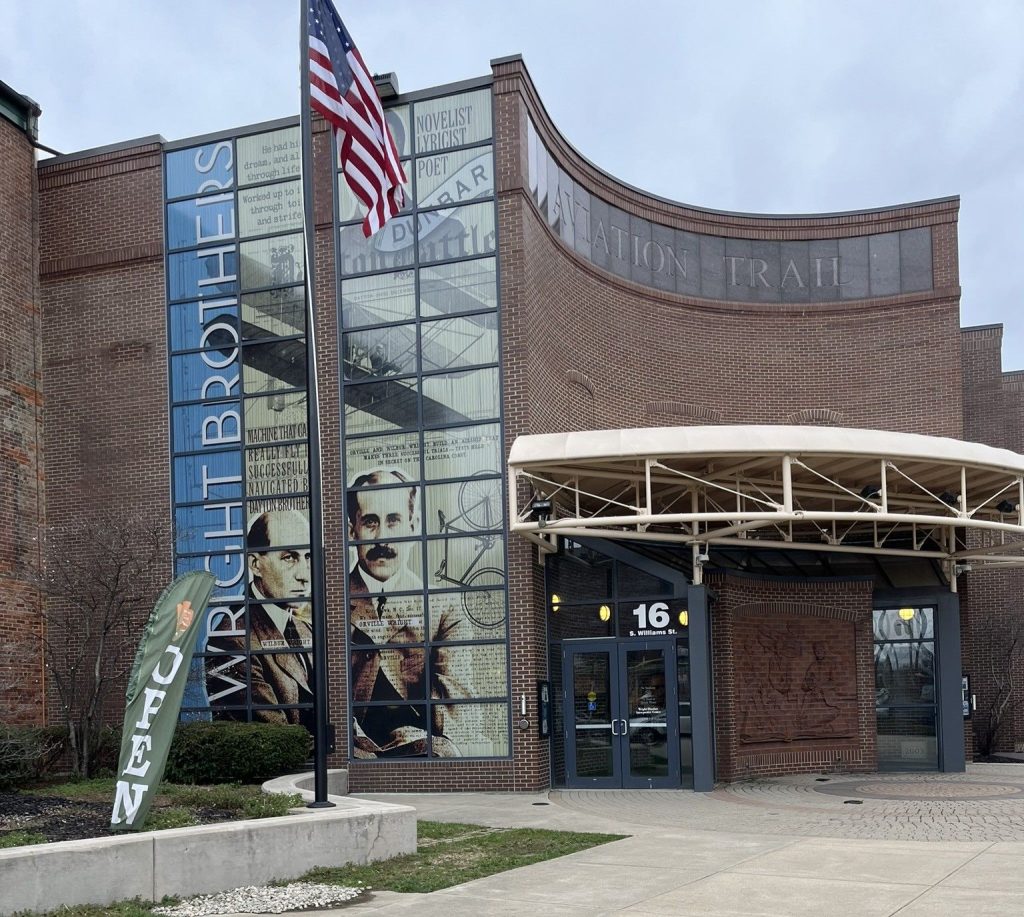
The visitor center is surprisingly large and packed with exhibits that tell the complete Wright Brothers story. What really blew my mind was learning about their printing business – this part of their story is incredibly well told through the exhibits. The Wright Brothers weren’t just bicycle shop owners; they were publishers, running their own newspapers including the West Side News and printing Paul Laurence Dunbar’s Dayton Tattler for the African American community. Wright State University’s archives preserve many of these original newspapers, showing the breadth of their publishing work.
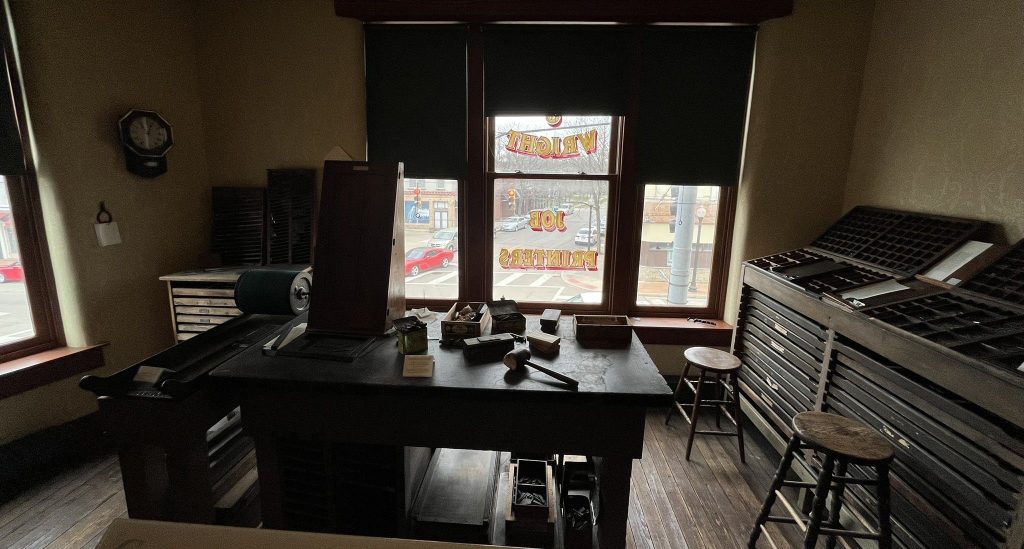
The center houses a beautiful replica of the Wright Flyer, which provides an excellent photo opportunity and helps you visualize their achievement. But honestly, it was the printing exhibits that surprised me the most. The attention to detail in explaining their various business ventures really demonstrates their innovative minds were at work long before they tackled flight.
Don’t Miss the Wright Cycle Shop(s)
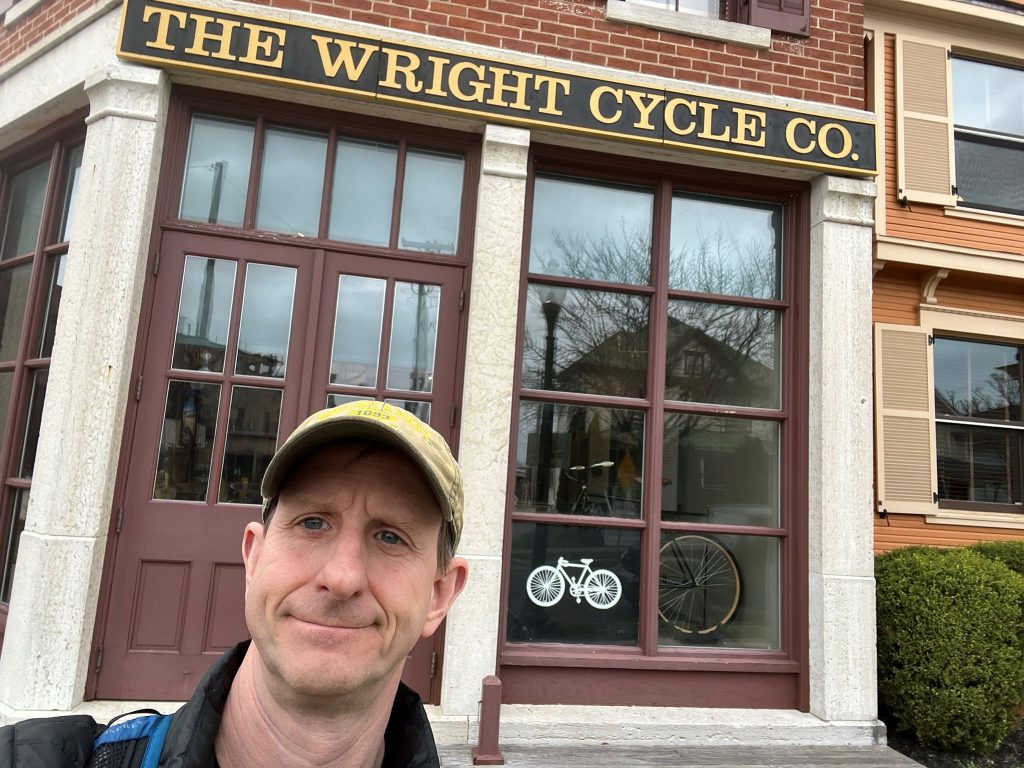
Here’s where the exceptional customer service of the National Park Service really shines. The Wright Cycle Company building, which is the second bicycle shop they opened was closed when I headed over after my visit at the main visitor center. I initially thought I’d missed my chance, but an incredibly helpful park ranger noticed my disappointment and actually reopened the bicycle shop just for me to walk through and take photos. I was so appreciative of her helping me out!
This kind of above-and-beyond service is amazingly consistent with all my interactions with park service staff across the country.
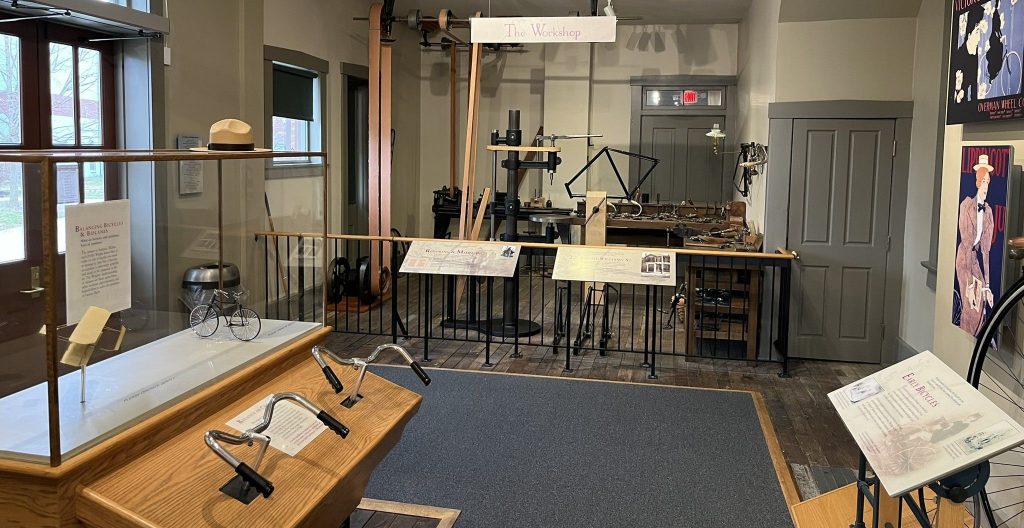
The bicycle shop itself is small but authentic – it’s one of only two original Wright Brothers buildings still standing in their original locations in Dayton. You’ll see period bicycles, machinery, and aviation displays that show how their mechanical expertise with bicycles translated into solving flight problems.
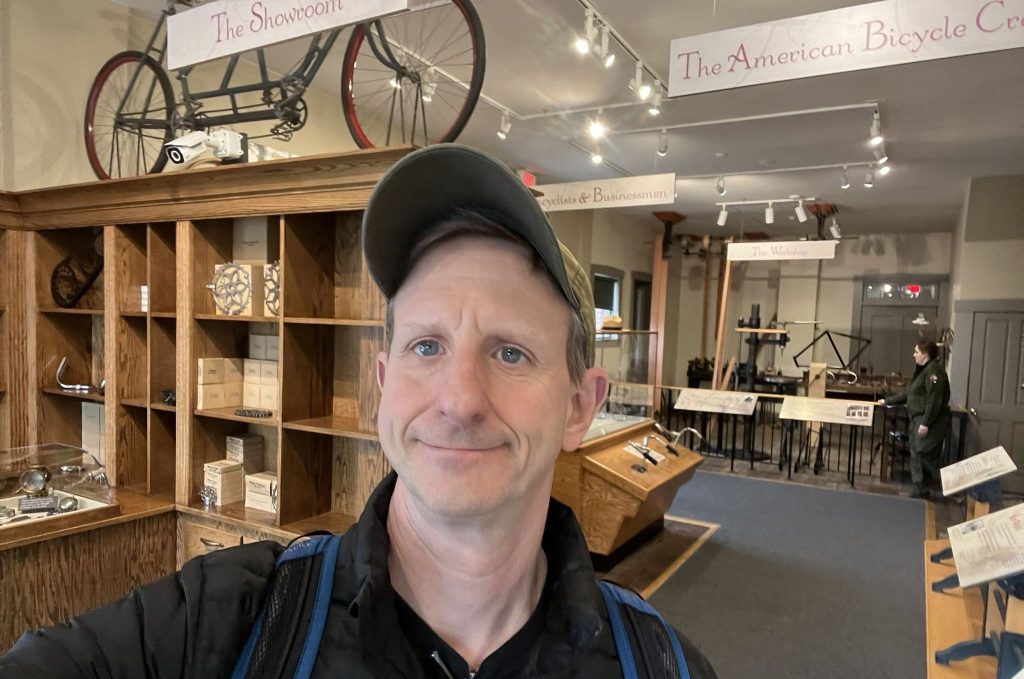
The Paul Laurence Dunbar Connection
I wasn’t aware of the connection between Paul Laurence Dunbar and the Wright Brothers before my visit, and this discovery was absolutely fascinating. Dunbar was Orville’s high school classmate and later became an internationally acclaimed African American poet. The Wright Brothers printed his newspaper and supported his early literary career, showing how interconnected Dayton’s innovative community was during this period.
The exhibits do an excellent job of weaving together these three men’s stories and showing how their friendships and business relationships supported each other’s groundbreaking work.
The Complete Wright Brothers Story
Standing in that visitor center, surrounded by exhibits about their printing business, their systematic approach to solving flight, and their deep community connections, I kept thinking back to my earlier visit to the Wright Brothers National Memorial in North Carolina. That site shows you where they achieved their famous first flight, but Dayton shows you how they got there.
This is where they developed their understanding of aerodynamics, built their wind tunnel, tested their theories, and refined their designs. The Kitty Hawk flights were just the culmination of years of methodical work that happened right here in Dayton. Visiting here really pulled the complete story together.
Getting Your National Park Passport Stamp
The passport stamp is available at the Wright-Dunbar Interpretive Center desk. The staff was friendly and helpful – perfect customer service as always from the National Park Service. If you’re serious about National Park passport stamp collecting, this location offers some unique opportunities beyond the standard park stamp. I collected several special bonus stamps here including the Wright Route bicycle trail stamp and the Aviation Trail Parachute Museum stamp.
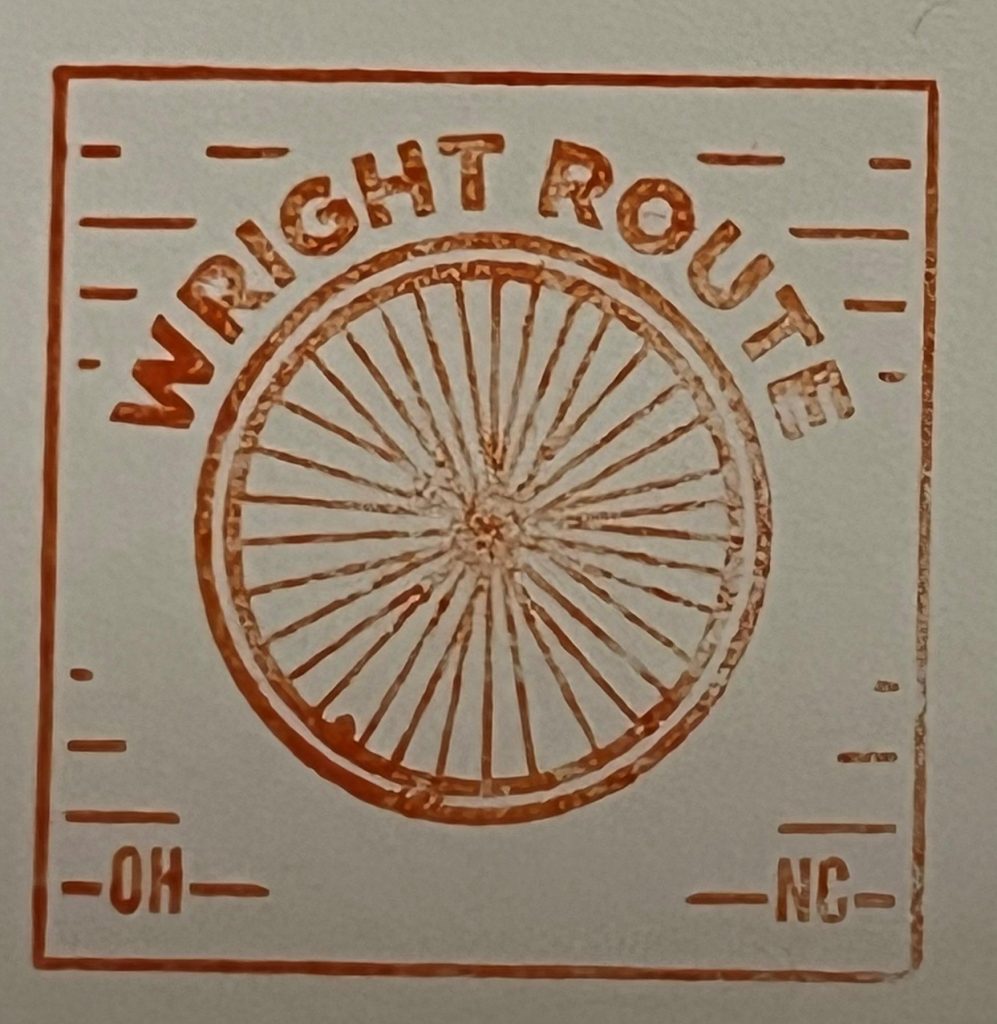
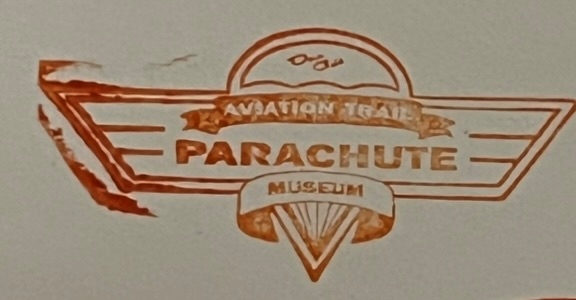
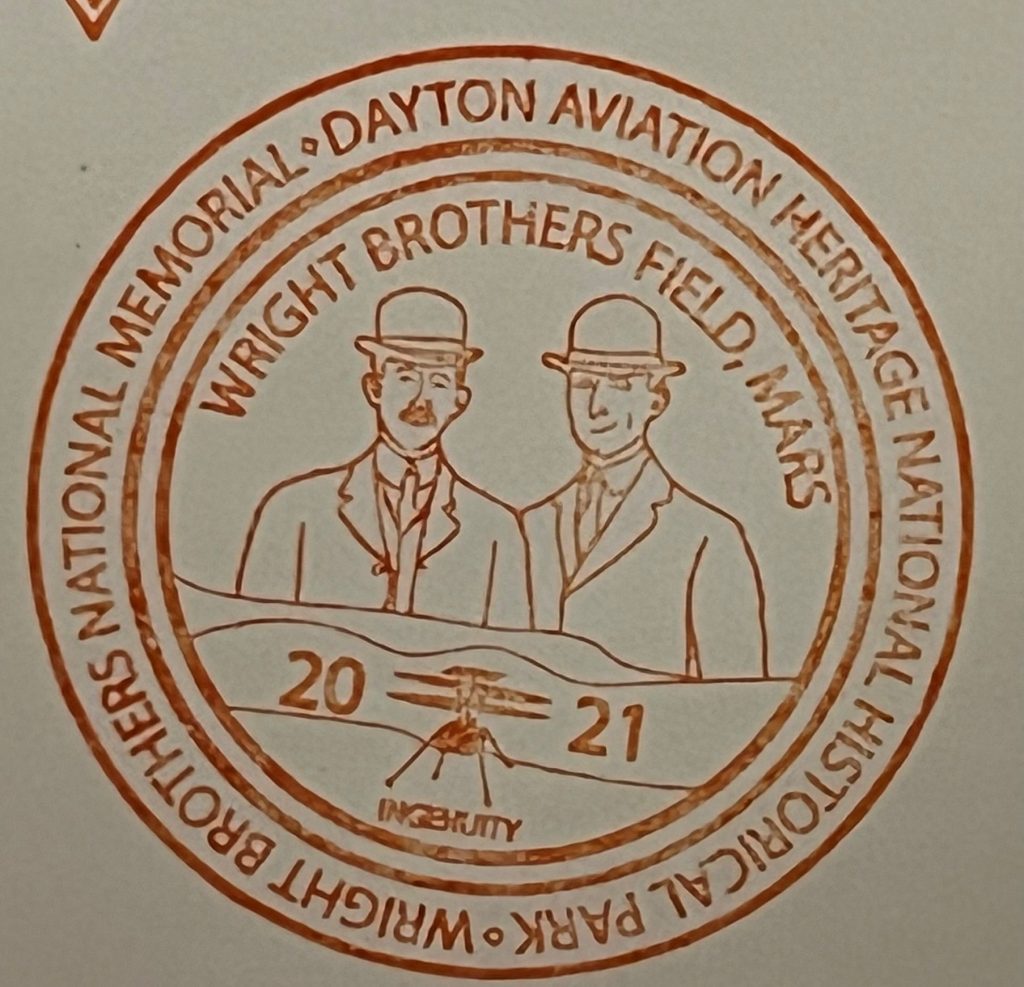
Planning Your Return Visit
My quick visit barely scratched the surface of what Dayton Aviation Heritage National Historical Park offers. The park includes six sites total:
- Huffman Prairie Flying Field – Where the Wright Brothers perfected their flying
- Wright Brothers Aviation Center at Carillon Historical Park – Features the restored 1905 Wright Flyer III
- Paul Laurence Dunbar State Memorial – The poet’s restored home
- Hawthorn Hill – Orville Wright’s mansion (tours by appointment)
- Wright Company Factory – The first airplane factory (not yet open to public)
When I return to the Dayton area, I absolutely plan to visit these other sites and spend more time diving deep into the story I started to uncover during my brief visit. If you have more time, definitely plan better than me, and take in all these sites.
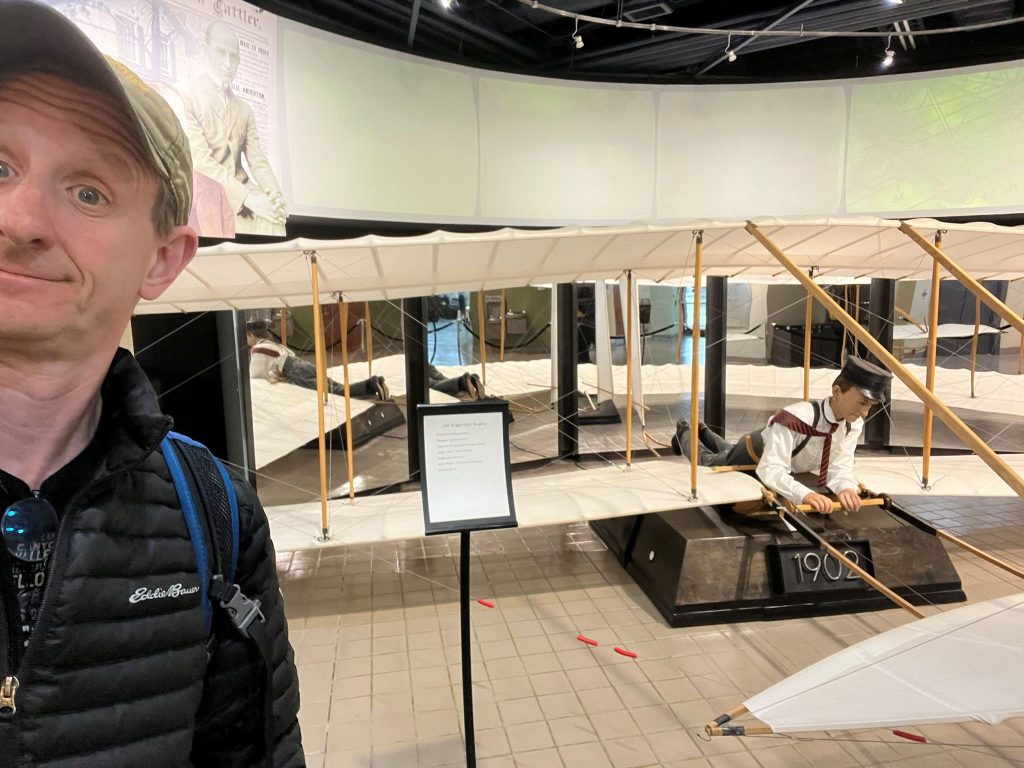
Roaming Monk Tips
- Ask about the bicycle shop tour immediately when you arrive – ranger availability varies
- Allow at least 45-60 minutes even for a “quick” visit – there’s more to see than you expect
- Don’t skip the printing business exhibits – they’re incredibly well done and show the Wright Brothers’ complete entrepreneurial story
Even with limited time, Dayton Aviation Heritage National Historical Park delivers an incredible experience that will deepen your appreciation for the Wright Brothers’ achievement. The combination of authentic locations, excellent exhibits, and outstanding park service staff makes this a must-visit destination for anyone interested in aviation history or American innovation.
Another thing to keep in mind is if you are wanting to explore state park passport programs in Ohio – they offer additional collecting opportunities that complement your National Park experiences.
Frequently Asked Questions
How much time should I plan for a complete visit to all park sites?
Most visitors need 3-4 hours to see all the major sites if driving between locations, and I can see this to be an all-day activity as well. However, as I discovered, you can have a meaningful experience in under an hour if you focus on the Wright-Dunbar Interpretive Center and Wright Cycle Shop next door.
Is there an entrance fee for Dayton Aviation Heritage National Historical Park?
No! Admission to all park sites is completely free, including the Wright-Dunbar Interpretive Center, Wright Cycle Shop tours, and Huffman Prairie Flying Field.
Is the Wright Cycle Shop always open?
No, the bicycle shop is only open when a park ranger is available to provide tours. Ask at the Wright-Dunbar Interpretive Center front desk about tour availability when you arrive.
Can I get my National Park Passport stamped here?
Yes! The passport stamp is available at the Wright-Dunbar Interpretive Center. They have a number of special bonus stamps as well, that you should ask about.
What’s the connection between Paul Laurence Dunbar and the Wright Brothers?
Dunbar was Orville Wright’s high school classmate and became an internationally acclaimed African American poet. The Wright Brothers printed his newspaper, The Dayton Tattler, and supported his early literary career.
How does this compare to the Wright Brothers National Memorial in North Carolina?
The North Carolina site commemorates their first flight achievement, while Dayton shows you their complete journey – their businesses, innovation process, and community connections. Both sites together tell the complete Wright Brothers story.
Is this suitable for families with children?
Absolutely! The exhibits are engaging and educational. Kids can earn Junior Ranger badges at the visitor centers, and the hands-on displays help explain aviation concepts in accessible ways.
What other Wright Brothers sites are nearby?
The National Museum of the U.S. Air Force is just a short drive away and makes an excellent addition to your Wright Brothers experience. Many visitors combine both in a full day of aviation history.
Can I visit if I’m not interested in aviation?
Yes! The park tells a broader story about American innovation, entrepreneurship, and community connections. The printing business exhibits and Paul Laurence Dunbar displays offer insights into 19th-century American life and literature.
Where should I park?
There is a large parking lot across the Sanford Ct. that you can use. A larger lot for buses and RVs can be found done Sanford Ct. toward Broadway Street. I was able to find street parking is right in front of the Wright-Dunbar Interpretive Center on South Williams St. The area seemed easy to find parking.
What should I do if I want to see everything but have limited time?
Focus on the Wright-Dunbar Interpretive Center and Wright Cycle Shop first, then prioritize based on your interests. Aviation enthusiasts should add Huffman Prairie Flying Field, while those interested in the complete story should include the Paul Laurence Dunbar State Memorial.
